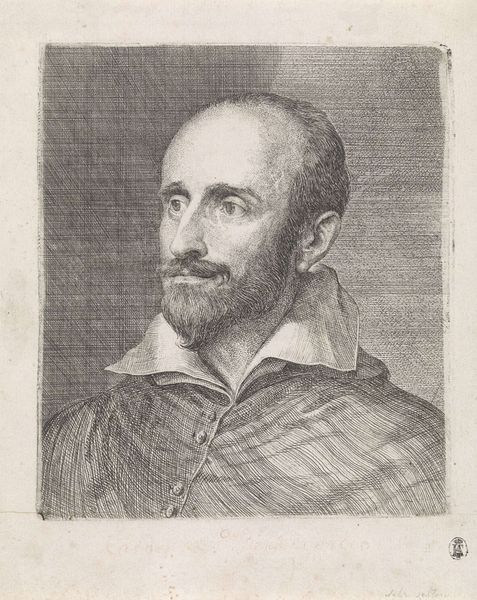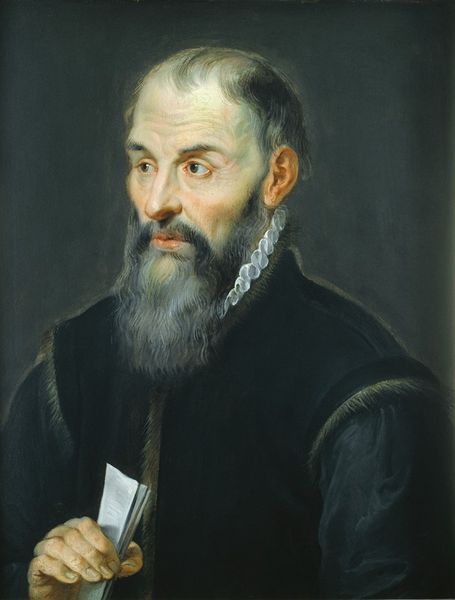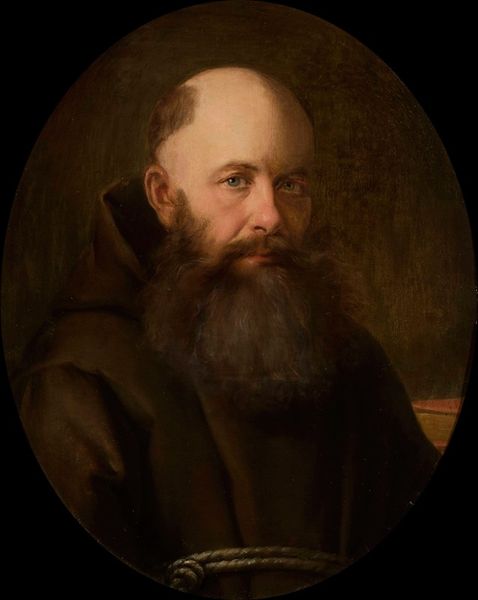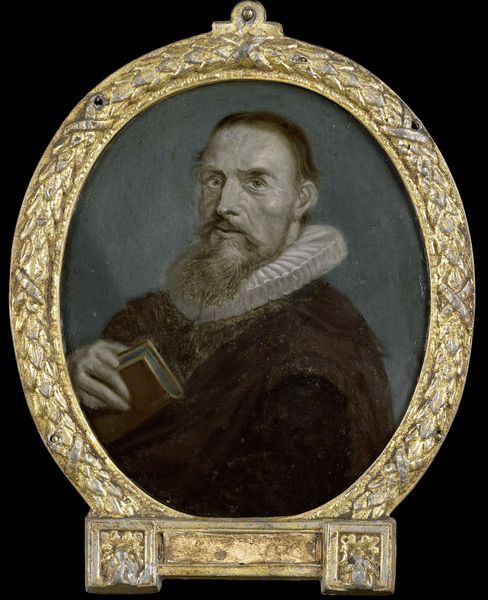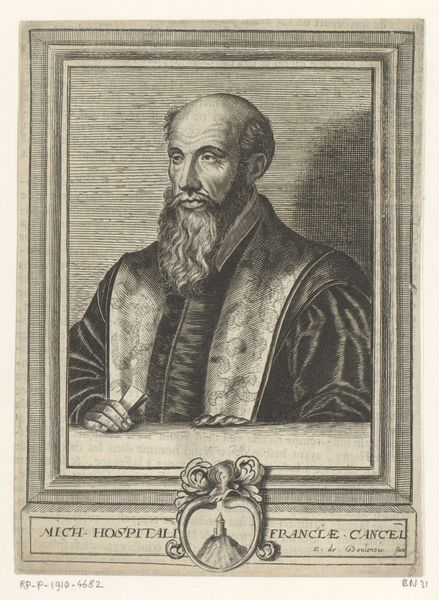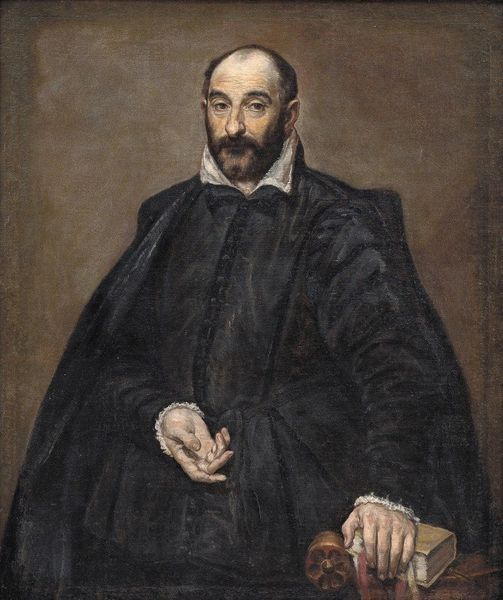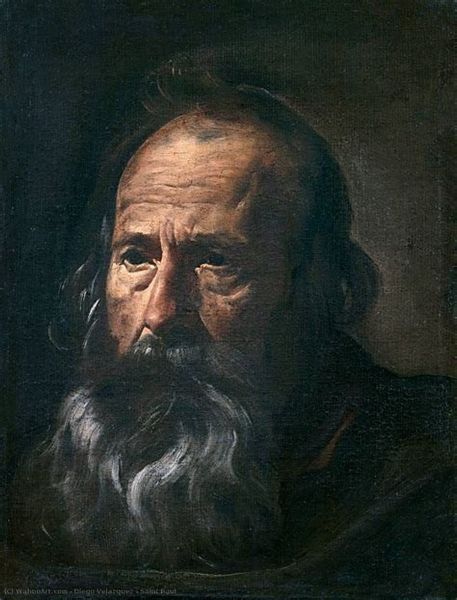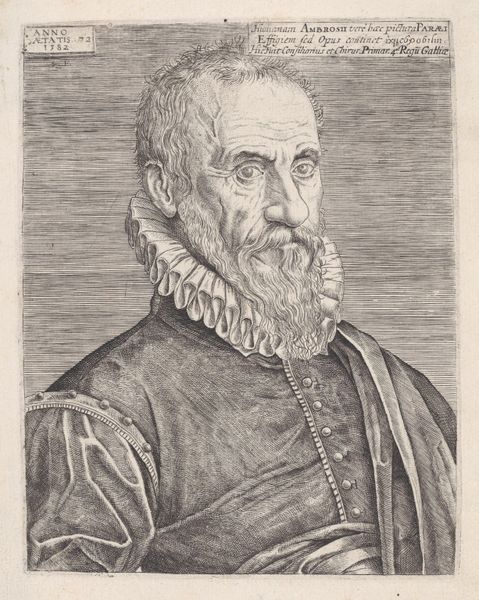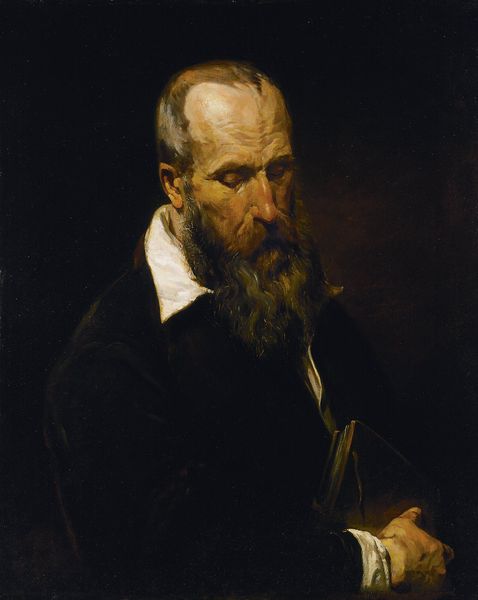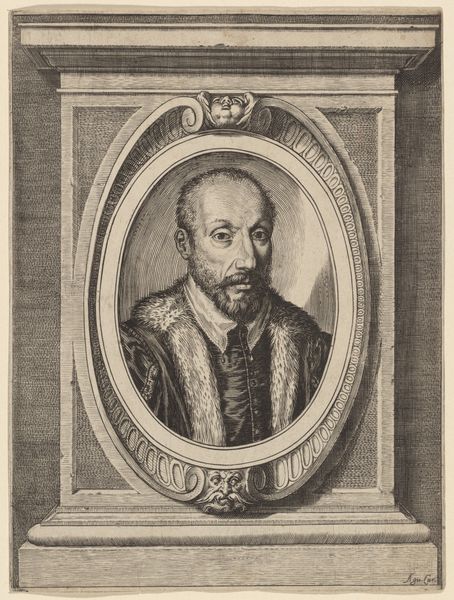
painting, oil-paint
#
portrait
#
high-renaissance
#
venetian-painting
#
portrait image
#
portrait
#
painting
#
oil-paint
#
portrait reference
#
portrait head and shoulder
#
chiaroscuro
#
animal drawing portrait
#
portrait drawing
#
facial portrait
#
portrait art
#
fine art portrait
#
realism
#
digital portrait
Copyright: Public domain
Palma il Giovane painted this portrait of Paolo Veronese, using oil, sometime in the late 16th or early 17th century. The composition is striking; the right half of Veronese's face disappears into a dark, almost impenetrable background, creating a dramatic contrast with the illuminated left side. Giovane's use of chiaroscuro not only models Veronese's features but also emphasizes the gaze, pulling us into an intimate engagement. The rough texture of the canvas and the visible brushstrokes add to the immediacy of the image. The very structure of the portrait—its division between light and shadow—can be seen as a reflection of the artist's internal state, torn between public persona and private self. The lack of elaborate setting or narrative allows us to focus entirely on the face, making it a study in pure presence. This portrait challenges the traditional function of portraiture, shifting from mere representation to an exploration of existential themes.
Comments
No comments
Be the first to comment and join the conversation on the ultimate creative platform.
